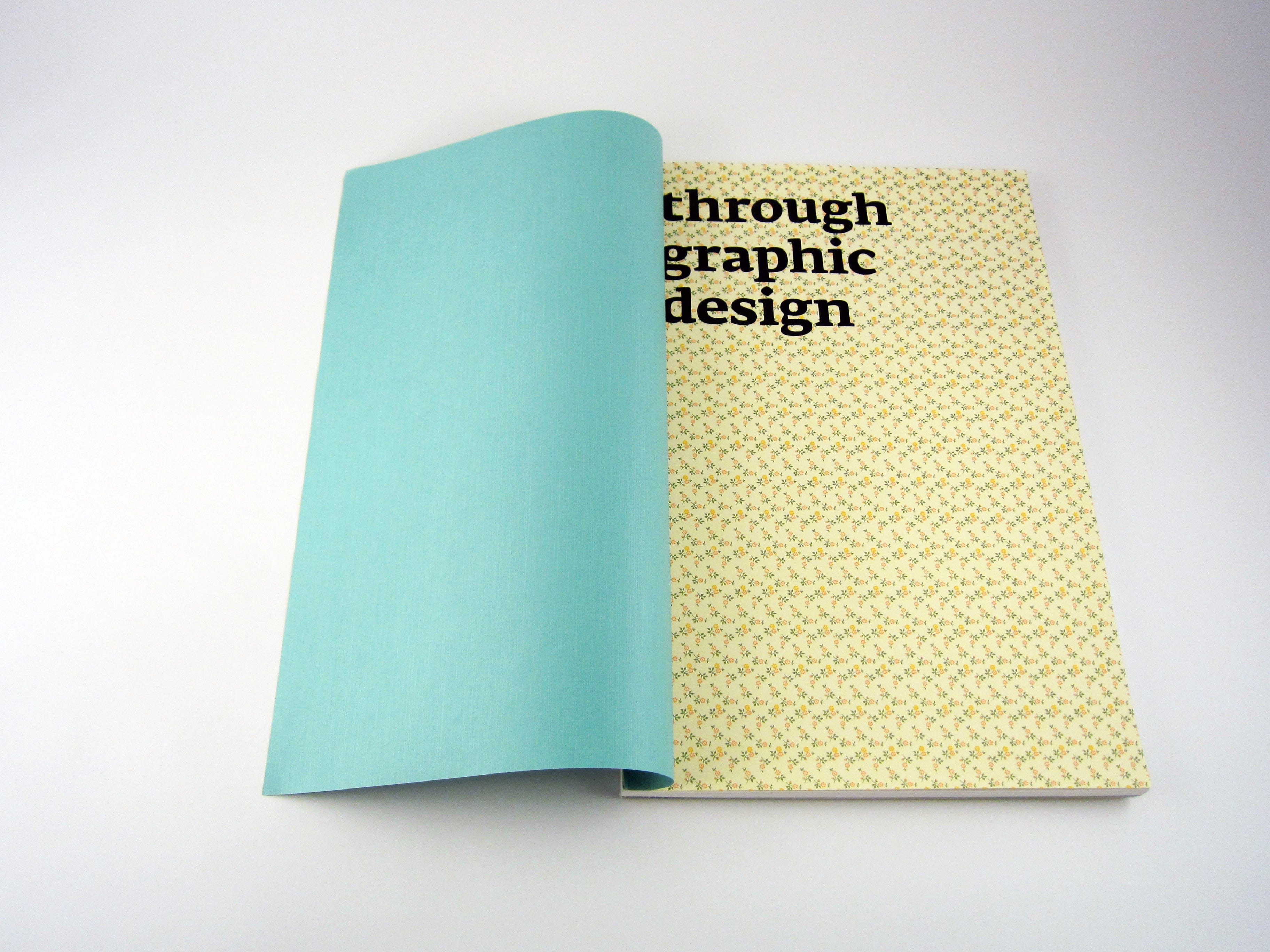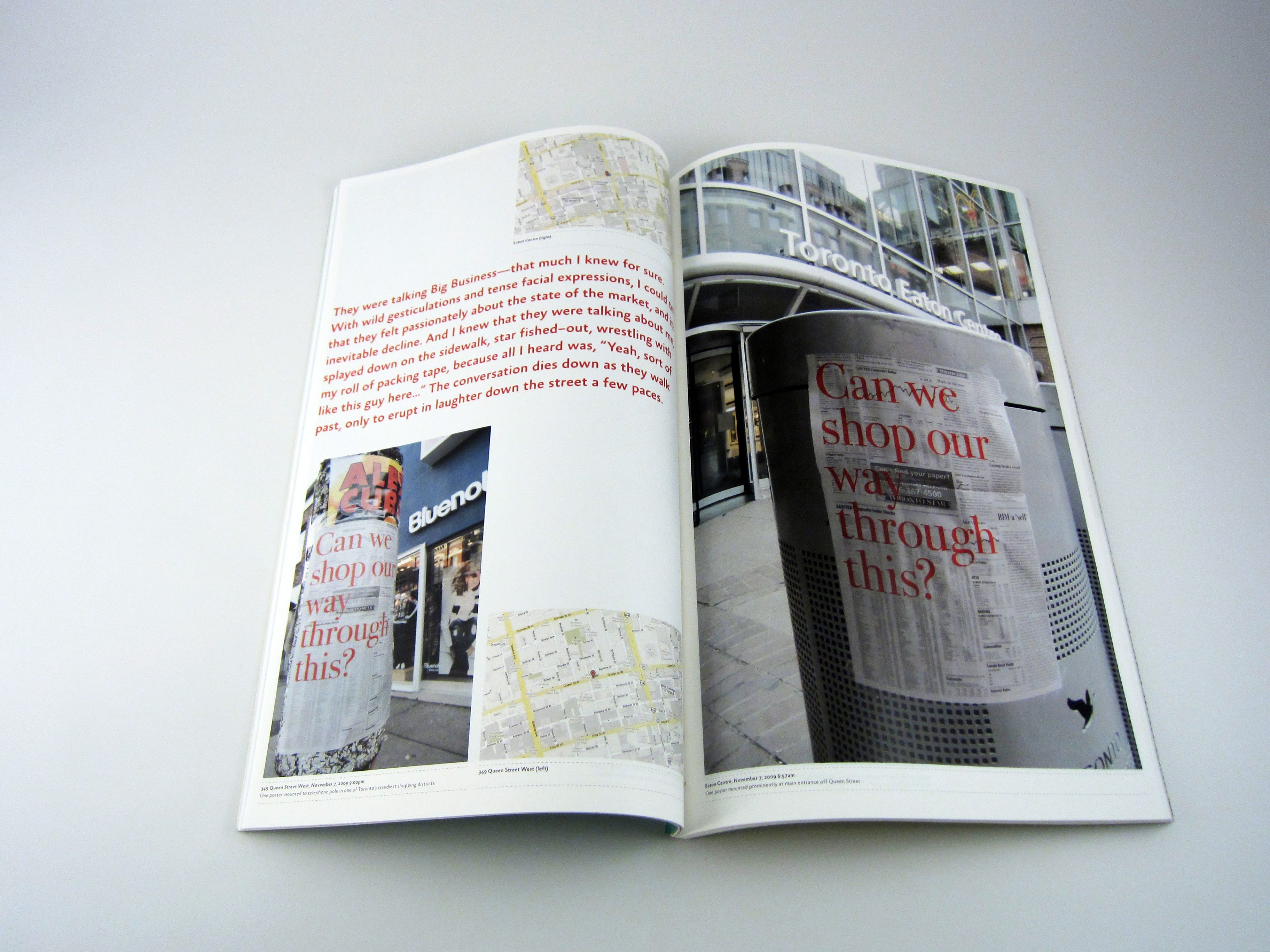

In search of touching one’s heart through graphic design
source link: https://uxdesign.cc/in-search-of-touching-ones-heart-f80a60433b60
Go to the source link to view the article. You can view the picture content, updated content and better typesetting reading experience. If the link is broken, please click the button below to view the snapshot at that time.

In search of touching one’s heart through graphic design

Publication front cover
In my memory, Toronto’s Queen Street West during the late 1990’s and early 2000’s inspired spirited walks. Working for a number of years where, at that time, a design community of book stores, design practices, art galleries, and creative education institutions had formed around the area of Spadina and Richmond Street West, Queen was an efficient and lively route to the design studio and classroom. I chose Queen as my primary route for a number of reasons. Interesting characters were found here: all-night revellers making their way home from after-hour clubs; the locals living in the abandoned textile factories along King Street; artists at work or on their way to their studios. Skateboards and bicycles were the preferred form of transportation by many along Queen. This was at a time when head shops and record stores were operating on nearly every block, when bars hosted live punk music and served cheap beer. As happens with development, the street transformed — a busier, faster, louder Queen West emerged.


Back then I remember the posters. The telephone poles swelled with layers of silkscreened, hand-drawn, and photocopied bills stapled into the wood. Vast amounts of material was plastered and affixed to every surface. Posters I had spotted one day would be hopelessly buried under newly-applied bills throughout the intervening hours between my next walk to work. On every journey at least one posted item would catch my attention, would have me pausing for a minute to read or scrutinize a drawing, a graphic, a typographic treatment. This early dawn and evening experience would both inspire me into a day of creativity and ease me into calming return walks home.


In 2001, designer Chip Kidd wrote and published The Cheese Monkeys, a story centred around a cast of first-year art and design students exploring early stages of creative education. There is a scene in the second half of the book, representing the spring semester, where an Introduction to Graphic Design course is brought into the storyline. The studio course is taught by one Professor W. Sorbeck, a teacher nobody seems to know anything about. Upon arriving to class, students are confronted by a sign, ink on notebook paper, taped to the studio door:
“INTRODUCTION TO GRAPHIC DESIGN
Formerly mislabelled INTRODUCTION TO COMMERCIAL ART
ENTER THE CLASSROOM AT EXACTLY 2:25 P.M. — WS” [1]
The students are slightly addled, but dutifully wait until the appointed time to enter the studio. “I sighed and leaned against the wall. What a bore this was going to be, like every other class at State. At least I talked Mills into taking it. She’d liven it up. At twenty-five after, we made our listless way into 207 and found seats. A minute or two of silence. Then, from behind us: ‘That was lousy. Do it again’.” [2] The point, later soliloquized by an increasingly mean-spirited Professor Sorbeck, was that to be a graphic designer meant noticing details within the world around us on a 24-hour basis.


Chip Kidd’s story brings back much of what we experienced in art and design school. The intensity, the passion and power of design, and the late nights that blurred into all-nighters. The making process was fun: tentative, initial steps scribbled out; refinement, presentation, critique, and re-starting; editing and honing until the work begins to assume more convincing forms. Every time I read Kidd’s book, I am transported back to the smells and sounds of the studios, the lecture halls with frenetic note-taking, and the long days of making so much stuff.
After a decade of studio design work I would later accept a teaching position which required my enrolment into a masters of design and communication degree. I found myself plunging into an ever more intense environment specifically designed for purposes of making. A massive amount of design work was expected, which I was quite comfortable with and excited about. It was also expected that the production of scholarly, written texts accompany all work submitted. While the learning curve was incredibly steep, I found a comfortable stride, and uncovered a new interest — that of making series of works that communicated in conjunction with a written exploration. Up to that point in my design practice, I hadn’t many opportunities to design books. This was my chance, and I flung myself into it. Making multiple series of works and texts, I found, could incorporate similar design processes. Initially I struggled with the writing, and looking back over the papers, they do cause discomfort and embarrassment. However, when the two components came together within the form of a bound book (I also learned processes for book binding) the result was magical. To this day I continue to explore this process initiated over 15 years ago!


In one of the studio courses I was interested in working in the context of the street. A series of posters were designed absent of advertising or sales language. The attempt was to gain attention and provoke response through messages more personal in nature: asking a viewer to rip a poster in half revealing a second message underneath; posters with rip-tabs displaying messages to perform acts of kindness; asking if a viewer’s day was poetic; flagrantly gaining a viewer’s attention through beautiful Japanese handmade papers printed with the message to “Please ignore”. The attempt was to provoke viewer interaction with the designs in more active ways (rather than passive observation) such as altering, writing, or drawing directly on the posters. As the interactions increased, the posters would be photographed, documenting each stage of participation. These photographs became the primary content for a book design. This experience of posting artifacts into public spaces with the intention to elicit interaction and response was exhilarating. The process of documenting any kind of response was joyful and humbling — they became moments of learning.
I now find myself once again in the midst of an intense moment of learning. I’ve wanted to learn more about creative writing, and the decision to jump into a bootcamp course was a little bet, serving as a very effective learning experience. Already halfway through the eight-week online course I am learning about sensitivity toward word use, sentence structure, control over mood and tone, and velocity through punctuation (beyond producing impeccable typography). It happened by chance that I had found the course after beginning to publish material to Medium. This practice of writing and publishing is helping me understand the importance of getting the work out into the world. Ultimately, I design because I want the work to be seen. I feel the same way for the things that I write — I send these texts out into the world to be read. Hopefully, they will add value to the lives of readers. In many ways, this practice of posting these very early forays into the written word are similar to those in which posters were stapled into public spaces back in 2009. Some things make connection, some don’t. They all serve as learning opportunities, and each contribute to improving the next project.


The practice of consistently moving forward is the thread through all of this. Exploration, creativity, learning. Constant forward momentum creates inertia. Obtaining ever more skillsets to make better, more sophisticated work has become an obsession. Jumping into new environments to learn is often uncomfortable, but it is a driving motivation for becoming ever better at what I love to do. The thing about making work is that some of it is good, most of it is not. Depending on when the work was made and our level of inexperience, the things we make reflect a striving to be great, but often missing the mark of excellence — even good. And that is fine. The important thing is continually putting ourselves into the way of learning. The good news is that we can always get better. As we advance, our development can be perceived in the stacks of stuff we make. So when I look back to the work included within this essay, and I see that it is flawed and immature, that simply confirms how far I’ve come since that moment in time in which the work was made. That, for me, is the best place to be. To have the long trail of work that showcases the willingness to put the time in and to be able to discern the improvement over the long haul—that’s the paper trail confirming and justifying the journey.
See full body of work here.
Jayson designs, draws, writes, and documents his world at jaysonzaleski.com. He can be reached at [email protected].
References
1. Kidd, Chip. The Cheese Monkeys: A Novel in Two Semesters. (Scribner, New York, 2001), p.97.
2. Ibid, p.98.
Recommend
About Joyk
Aggregate valuable and interesting links.
Joyk means Joy of geeK